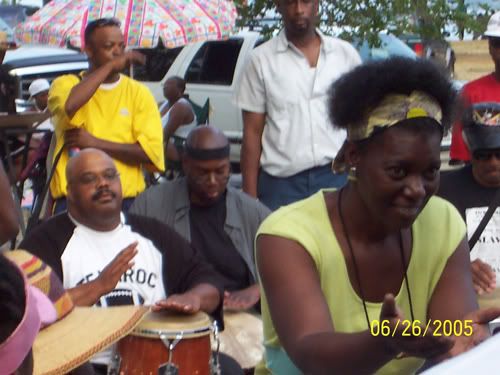
Black History Month. Does about as much for me as November: National American Indian Heritage Month.
And that is, usually, to piss me off. About something. Usually some silly little well-intentioned thing. Like this.
(Please note: emphasis on WELL-INTENTIONED).
Maybe I should preface this whole spiel with an insight from another diasporic community that has suffered great injustice (murder, genocide, centuries-long discrimination and prejudice): the German-speaking Jews of Europe.
German-Jewish journalist Henryk Broder, in a 1991 article in the far-leftwing German newspaper die taz famously stated that "Germans just love dead Jews--it's the living ones they can't handle."
As Karen Remmler points out in her introduction to Contemporary Jewish Writing in Germany, one of the primary concerns of 2nd and 3rd generation post-Shoah Jewish writers in Germany has been addressing symptoms of the recurring problem of non-Jewish Germans' inability to deal with the presence of living Jews in Germany.
German-Jewish authors such as George Tabori and Maxim Biller, for example, employ satire and heretical "Holocaust" humor to encourage Germans to stop hiding behind official acts of commemoration and confront remnants of fascism in their everyday lives.
To my mind, "Black History Month" functions much in the same way to focus attention on commemorating great Black heroes, both past and present, as a way of avoiding a confrontation with the remnants of racism in our everyday lives.
Americans love dead Blacks--it's the living ones they can't handle. Americans love Black sports stars, movie stars, celebrities--it's the homeless ones down the street they can't handle. It's the "successful", "articulate", "educated" ones in the classrooms, the courtrooms, the boardrooms (not to mention the bedrooms!) they can't handle. Any Black that's so far out of reach that you know you'll never have to look them in the eye will do.
Why is it easier to commemorate Black heroes--past and present--than it is to look to the living Black people around us and ask ourselves: what do they have to teach us? What can we learn from them? How do they contribute to our daily lives? To our education? To our betterment? To our enrichment, as human beings and as American citizens?
Could this be one way of escaping the realization that there might be some things African people have to offer us in America other than their bodies as pack mules, sports stars and sex-toys?
Could it be that we are so embarrassed by the part our past has played in the chapter we call "Black" history that we cannot look Black people on the street, in the classroom, in the courtroom, the board room, behind that big ol' account specialists' desk at the bank in the eye long enough to learn from them?
Could it be that we are afraid of being confronted with what WE have taken, and what we haven't?
And with that, I once again welcome you to the broken record of another "difficult listening hour", with a now thrice published piece illustrating this point on one specific example: the Drum Circle. (Also available here).
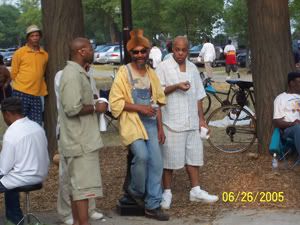
I don't know how, but somehow "cultural diversity" became the buzzword of the 90s. Seminars in "diversity training" filled board rooms and classrooms, and the ripple effect was felt in the upper echelons of corporate culture. New Agers throughout the country "discovered" and celebrated indigenous traditions. And that was a good thing--except that the process failed to encourage Americans to think about the way indigenous traditions were integrated into their own uniquely American culture. The not so fine line between "cultural appreciation" and "cultural appropriation" was blurred because, in these celebrations of "cultural diversity," we neglected to reconsider our own most basic assumptions and restructure them to fit the diffuse contours of those diverse cultures we sought to embrace. Ultimately, we wound up chasing our tails round and round in the same vicious circle of cultural monotony we were trying to escape. The attempt to incorporate "foreign" cultural elements into US-American society failed miserably because we changed them to adapt to our way of life and of learning without acknowledging that, in order to benefit from cultural integration and cultural exchange, we must change ourselves, our structures, our modus operandi. In short, we must change our minds.
About 10 years ago, I experienced an example of this malformed brand of "cultural diversity": A drum circle. Let's call the event facilitator "Arthur" and assume he is a "normal" American white male on a New Age quest for the holy grail. Arthur is a highly regarded "expert" on ethnic drumming. He holds a seat at a learned institution, is chummy with corporate sponsors of "ethnic" percussion and even manufactures his own line of "African" drums--made in America by a battery of white men in his employ. He is as well-reputed as any of the myriad of knights in tarnished armor venturing now into their modern-day quests for the holiest of holies. He telephoned, inviting me to be introduced to his circle as "elder." I was supposed to be flattered. Instead, I wrote him and politely requested that he not address me as "elder" because I reserved that term for members of tribal communities who had passed through certain pre-established rites and rituals to earn it. When I arrived, Arthur introduced me to the circle as "elder."
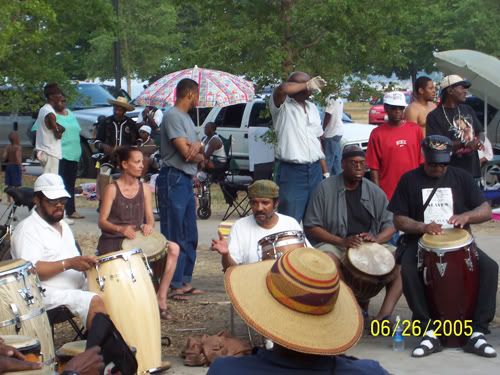
Chalice. Grail. Drum. Dollars. "It's all the same they seek, " I think as I peruse the participants' faces and am struck by the tragedy. "They don't know, do they?" I ask. They don't know they're doing anything wrong. They stand in a circle. Smiling, happy faces beating Drums of every size, shape, color and cultural origin.
Arthur's "educational" adventure consisted of a loosely veiled sales pitch for commercial enterprises ranging from "music circles" designed to transport participants to a "timeless place of healing" to "instructional" videos (tacitly designed to cut real African professionals out of the business) to his own mass-manufactured fiberglass "Drums" with plastic heads (we were assured of their superiority over their cruder, more authentic African counterparts). About halfway into this live info-mercial, I acted in accordance with the title of elder and spoke, as an elder is obligated to do, my peace. In the attempt to redirect community focus from African things to African peoples, I said what had to be said: "The African Drum cannot be detached from the issue of racism in this country."
The man who'd burdened me with the title of "elder" grudgingly allotted me four minutes to speak and could not refrain from reminding me of each passing minute: "OK!" he growled, "you've got four minutes." (Yes, I know, Arthur, it's why I'm speaking so quickly). I stressed, as politely as possible, that all of us who employ indigenous arts for personal pleasure or professional gain must accept the responsibility for addressing the issue of racism. "Three minutes." (I am a drummer, Arthur, I do not need you to keep track of time for me). I felt compelled to publicly critique the manner in which ethnic drumming was being converted into the USA-Today format so that it, too, might successfully be woven into the fabric of a white supremacist society--"Two minutes!"--caught in the throes--"One minute!" (I think you're speeding up a bit, Arthur.)--of denial. "Time's up!" Before I could explain what was wrong with the bright colors he'd glossed over the man-made-in-America object that perhaps looked like an African Drum, but certainly did not sound like one, my hand-made-in-Africa-by-Africans Drums and I were whisked out of the room. This "negative energy" source thus eliminated, the Drum circle was free to continue in the same vicious circle of cultural debauchery so vital to its success.
The incident was passed off as a display of "arrogance" on my part. It is the classic Caucasian response to my plea that we see what we are missing about African Drums and drumming. My background includes years of intensive study with world-class African professionals in Europe and in Africa. I have spent two decades teaching, performing and practicing (8 to 10 hours daily!) the intricacies of just one West African Drum tradition-the musical wealth of but one tribe in one small country in Africa.. Still, I cannot claim to be an "expert," nor am I the "master" drummer others have made me out to be. I have perhaps traversed more miles across the head of the Drum than others, and so may be considered an "elder" drummer. But ultimately I know only enough about these traditions to be clear about how much I don't know.
However, there are some things I know for certain. One is that what I witnessed at Arthur's circle has nothing to do with African drumming because African drumming is as much about African peoples (of whatever nationality) as it is about African Drums: You cannot take the Drums without the people any more than you can the people without the Drums, for the Drums are the heart of a people. Any people. All people/s. But the people gathered there didn't want to hear that. They had come to beat the Drum , not to Drum the beat. They had come to beat, barter and buy. Unwittingly, they had been encouraged by their "elders" to bastardize.

The basic misconception underlying the mis-directed (ab)use of these art forms is this: we still suffer under the illusion that these things were placed on the planet to entertain and serve the dominant white classes. In the aftermath of the self-inflicted suburban wound, we look to the Drum as mystic panacea, miracle cure, spiritual medium and fine instrument of healing. We do not understand that the healing power of the Drum cannot be confused or compared with forms of "Western" healing. The ability to unleash the healing power of ANY Drum cannot be gleaned from one brief circular session like this. A circle of novice Drummers led by one moderately proficient ringmaster cannot affect any sort of healing. Instead, participants experience a "rush" similar to the effect of caffeine or nicotine. It is a quick-fix to a chronic problem: human psychic disintegration in the aftermath of three thousand years' psycho-social decline. The therapeutic value of such a session lies in the venting of frustration.
This attitude reflects the height of arrogance because it denies the complexity behind these holistic instruments of healing. The tacit assumption is that these healing methods are somehow "less sophisticated" than Western medical practices. If we take the Drum seriously as a healing medium, we would have to compare Drum circles like this to handing out scalpels to a group of untrained would-be surgeons.
But the Drum, unlike the scalpel, is not only a medical instrument, it is also a musical instrument rooted in a complex, formal tradition. Every Drum has a sound "spectrum" that resembles a "scale" and can be produced only by stroking the Drum with a specific technique that is different for each Drum type but the same for all Drums of one type. Thus, the "djembe" Drum is played with a technique unlike that of the "conga," the "ashika," the "sabar" or the "bougarabou," but all properly strung and constructed djembes should emit the same basic sound when played with "djembe technique". A djembe played like a conga will not sound like a djembe. If we take the Drum seriously as a musical instrument, the drum circle could be likened to a situation in which novices are given saxophones, clarinets, French horns, tubas, etc. and instructed to "blow". Blow to your heart's content. Blow in unison. Blow in tandem. Blow together. Blow apart.
Literature on the subject is replete with analogies drawn between Drumming and heterosexual eroticism. In drum circles, we are told this is about "loving" Drums. If we are serious about our "love" relationship with the Drum, these drum circles reveal themselves to be little more than metaphorical gang bangs or hasty one night stands. Neither medicine, nor music, nor love can be made in the clumsy clutter of cultural fragments haphazardly thrown together in a "drum circle."
Perhaps it is because we are so unaware of our own traditions that we barter so recklessly with others'. Perhaps we fear our own historical past is void of anything as powerful as this. If that is the case, why can't we apply our American ingenuity to developing an entirely NEW Euro-American Drum tradition? This would certainly lend valence to the otherwise rather vacant term "New Age." In essence, this is what we have done in creating the "drum circle," for this type of Drum event does not exist in tribal societies. But, we have taken the Drums from the hands of others to do so. The first step along THIS "drummer's path," then, involves an act of thievery.
Every ethnic population on the planet has its own unique Drum tradition, but most of us have let them slip out of our hands. It is in our hearts that we feel the absence and it is this void that draws us to the drum circle. We cannot seek to fill that void by re-inventing the tradition of the Drum. We cannot wrench the Drums from the people who made them and introduce them to traditions we have developed.
Drumming, in the indigenous context is a profession or a "calling." We are "called" by way of spirit visitation to the Drum. Drumming is a discipline, not a pastime. It is not something everyone in Africa does. The "village drum circle" is an auditory illusion: the noise produced in such an event bears no resemblance to the music produced by a trained African Drum ensemble. Most African peoples would not embarrass themselves by attempting to create what only a select few have been chosen to create and are capable of creating as a result of years of practice and study.
Drum circles, together with the packaging of Drum wisdoms in "do-it-yourself" video tapes and comic books, reinforce the illusion that Drumming is something anyone can do; that this musical/medical tradition can be mastered without the guidance of mentors and with a minimum of personal investment and sacrifice. What is the purpose of a "self-help" system for learning African drumming? Why is it easier to invest resources into automated learning devices than to invite trained experts from the culture of origin to teach us? Could this be one way of escaping the realization that there might be some things African people have to offer us in America other than their bodies as pack mules and sex-toys? Could it be that we are so embarrassed by the part our past has played in the chapter we call "Black" history that we cannot look the Drummers and Drummakers in the eye long enough to learn from them? Could it be that we are afraid of being confronted with what WE have taken, and what we haven't?
The Drum mania currently taking the country by storm is long overdue. These art forms may indeed be the one thing with the power to save us from ourselves. But our search for salvation will inevitably backlash into disaster if we do not accept indigenous wisdoms on indigenous terms. This requires a rethinking of how we beat, barter, buy and sell Drums. It requires the willingness to abandon our own preconceived notions of what learning is, what love is, what respect is; of hierarchy, of power, of what we have the "right" to do and what we don't.
Drumming must be passed from hand to hand. Written materials and videotapes may be useful supplements to qualified and ongoing, interpersonal transmission of information, but the fine and folk arts of indigenous peoples cannot be plugged into an interactive video station.
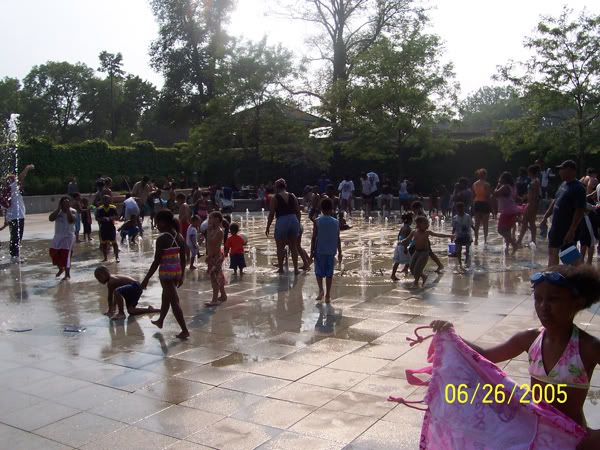
What must occur before any kind of mutually beneficial cultural exchange between "first" and "third" worlds can transpire (whereby, from a historically correct perspective, "Euro-Americans" are members of the third world, not the first!), is that Caucasians begin addressing the issue of racism without prompting from people of color. Racism is not a "Black" issue, it is not an "African" issue. It is not an indigenous issue. It is a white American issue. The spread of white supremacism has made it a human issue. The problem is in our heads and its presence is evidenced by the fact that we can, without any consideration for the shared history that brought us to the position of handling African Drums, gather to beat them in this manner. As long as we remain oblivious to the spiritual significance of the Drum as a cultural artifact, we will never understand objections raised by Black people in this country to the phenomenon of the white-Rasta or "Scandifarian" drummers flooding the marketplace with their own peculiar brand of "cultural diversity." This stance can only be the result of socio-pathological moral degeneracy or a complete denial of historical reality. The spiritual significance of the Drum is aptly portrayed in Alex Haley's Roots when the slavetraders come and wrench protagonist Kunte Kinte from his homeland and, essentially, from his heart, i.e. the Drum. Throughout the period of slavery, prohibitions were enforced against African drumming under severe penalty because the drums were viewed as expressions of insurgent tendencies among the enslaved African peoples. Against the backdrop of these historical tidbits, one can only begin to fathom what it must mean for African-American peoples to witness the spectacle created by so-called "Drum makers" currently manufacturing their own drums for commercial purposes in this country.
African Americans have not been afforded the luxury of forgetting the racist tradition upon which this country was built. But, this very history is as much a part of who we white Americans are as who Africans have become as a result: Americanized Africans, i.e., Africans who, as a direct consequence of our historical development as whites in this country, are no longer recognized as Africans in Africa. Because this history is essential to the cultural context of the African Drum in the US, we cannot partake of ethnic traditions without also confronting racism as it necessarily exists in our own minds. We are products of this society; and, because this society developed out of a racist tradition, each of us is part of that tradition. We cannot wipe the slate of history clean with the wet-nap of a civil rights act or the affirmative action plans that have come under attack even as the "cultural diversity" buzz makes the rounds. These are superficial bandages applied to the deep and aching wound of institutionalized and internalized racism. We need to recognize racism as our human problem, not as someone else's "issue".

The African Drum has the potential to heal the wounds of any society, but this cannot occur as long as the patients refuse to cooperate. In the community drum circles cropping up all over the country, we have anesthetized patients springing from the operating table to perform their own surgery. It is akin to a group of drunken alcoholics mutually perpetuating their own illness, all the while maintaining amongst themselves the illusion that there is no problem. But, there is a problem. That problem is deep-seated, internalized, institutionalized racist disregard for the sanctity and complexity of indigenous traditions.
This does not mean that African drumming is something only "Black" people should do. What is objectionable is the manner in which we venture into this "new" territory: we do so without recognizing that it is not uncharted territory. It has been occupied by indigenous peoples since time immemorial. We must recognize that the past five hundred years of US history--Red, White, Brown, Yellow and Black History--have brought us to a position of slight imbalance in the world. Its most crass expression is evident in the fact that we can traipse into TJ Maxx and pick up an African cultural artifact with a hundred bucks slapped on its head while, at the same time, children in the inner cities play with more affordable toys, like guns. The Caucasian crime is not its interest in African art forms; it is the refusal to see the connection between the Drums and the people who created them. Accepting and understanding this connection is one prerequisite to integrating the tradition of the Drum into our lives. It is the price our ancestors have placed on the Drum-a price only we can pay.
The drum circle is a commercial enterprise wrapped in the guise of spiritual experience. Its real motivation is sales, not salvation. But, in the indigenous context, Drums are for people, not profit. So, reinventing the African Drum at a considerable profit to the American multi and at a considerable loss to the African native is "against the rules" established by the ethical tradition of the ethnic Drum. But making money, something that was once a means to an end, has become an end in itself--one to be reached by any means necessary, even if those means include the wholesale sellout of entire continents. The rules of American commercialism permit us to circumvent indigenous labor, employing indigenous know-how to re-construct crude facsimiles of sacred objects and sophisticated musical instruments. The commercialisation of the pseudo-African Drum is socially, ethically and legally upheld by our moral framework. It is, however, in violation of the ethic of the ethnic Drum.
In the ten years since this article first appeared in a modified form in Race Traitor, the American market has changed: In recent years, drummers like Mamady Keita and Famoudou Konaté have toured the country annually, offering instruction to students in well-attended seminars from coast to coast. These are positive developments because the shift from appropriation to appreciation begins with seeking the guidance of "elders" indigenous to whatever culture we hope to "discover."
In capitalist society, respect is expressed in monetary terms: we pay tuition because we respect the institutions that educate us. But it's not just about respect: we also expect monetary returns on our investment. We can apply the same economic logic to indigenous art forms: sincere appreciation involves placing them on a par with other forms of "higher" education, and we must be prepared to pay qualified experts a fare market rate for their teachings. In this regard, there has been some progress in the past ten years. But all too often, drum students expect overnight returns, and after only 4 weeks in Africa and a year or two of qualified instruction, elevate themselves to the level of "instructors" and begin offering their own seminars. Consider the time and money it takes to become a professor, a doctor, an attorney or a concert pianist. Why do we presume indigenous art forms require less? Is it because we have traditionally been taught to assume they are less sophisticated, less "scientific", less structured and systematic? I think it is. And I think it reflects the degree to which we still cling to our own notions of cultural superiority, even as we struggle to develop appreciation and respect for indigenous cultures. The bottom line is investing resources in qualified instruction from people whom we have been taught to consider culturally inferior without expecting to supplant the teachers and begin offering instruction before we have even begun to approach "mastery" of the traditions. We must see ourselves as students, not as teachers, consumers, merchants and "masters" of these traditions. And as students, we do not determine curriculum, nor do we establish the "cost of doing business"--the teachers do. Nor do all students necessarily become teachers--not any more than everyone who completes a BA ends up with a PhD, an MD or a JD. Our own cultural transformation is contingent on our willingness to put our minds and our money where the masters are and to accept the idea that the return on our investment may not be economic. It could be that we just become better human beings.
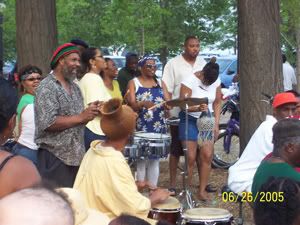
No comments:
Post a Comment